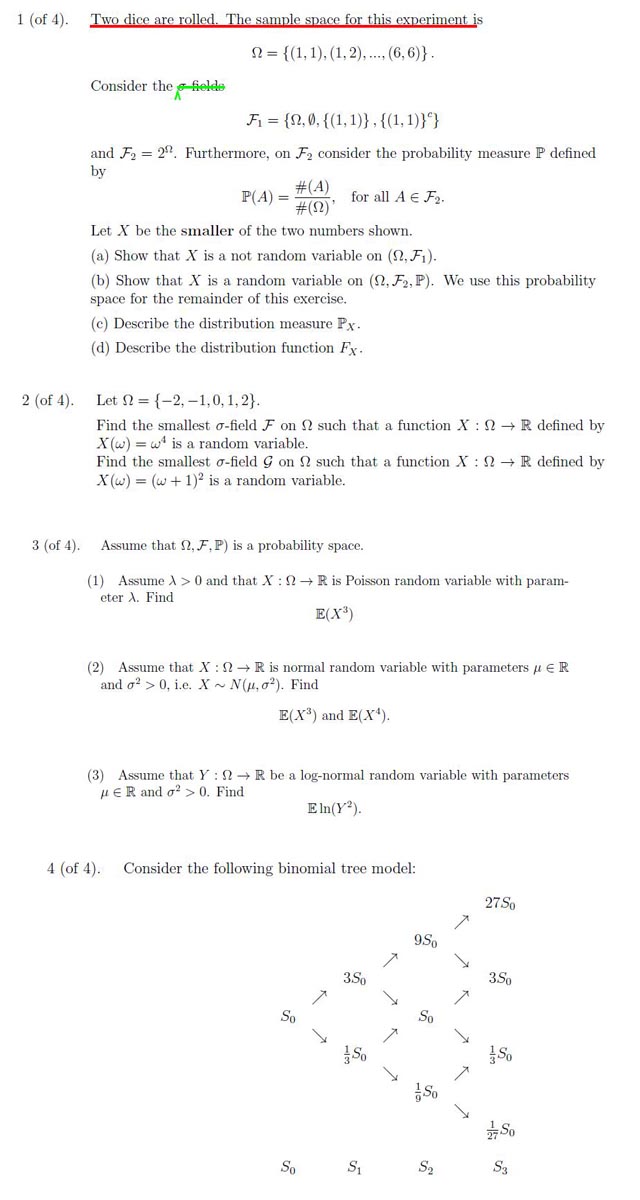
浏览: 日期:2019-06-15
DEPARTMENT of MATHEMATICS代写
Mathematical Methods of Finance, Assignment no 1
Answer as many questions as you can or wish.
Solutions to this Exercise will be assessed.
If a marking scheme is shown, it is indicative only.
In order to be marked, the solutions should be handed in by 15:00 on Monday the 12th of November.
Two dice are rolled. The sample space for this experiment is

where Sn, for n = 0, 1, 2, 3, denotes the stock price at time n.
(a) What is the sample space of the tree in the picture? (Use the notation u for ”up” and d for ”down”. So, udu is the sample path ”up-down-up”, leading to a stock price S3 = 2S0 at time 3.)
(b) Find a sequence P0, P1, P2, P3 of partitions of Ω, which describes the in-formation structure of the tree through time. (That is, Pn should describe the information that you have at time n. In other words, Pn is the partition generated by random variables S0, . . . , Sn.)
(c) Find the corresponding sequence of σ-fields F0, F1, F2, F3 on Ω and verify that F0 ⊂ F1 ⊂ F2 ⊂ F3. Such a sequence is called a filtration.
(d) Show that S2 is a random variable on (Ω, F2).
(e) Discuss whether the following sequence of partitions R0, R1, R2, R3 could represent the information for the tree structure:
R0 = {Ω, ∅} ;
R1 = {{uuu, uud, udu, udd} ; {duu, dud, ddu, ddd}};
R2 = {{uuu, uud} ; {udu, udd, duu, dud} ; {ddu, ddd}};
R3 = {{uuu} ; {uud, udu, duu} ; {udd, dud, ddu} {ddd}}.
In other words, find the sequence of σ-fields generated by this partition and check whether they form a filtration. An alternative solution is also acceptable.